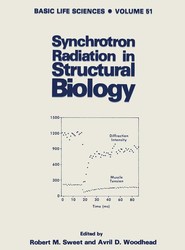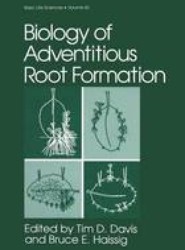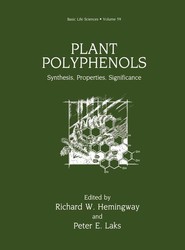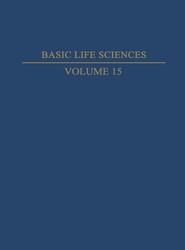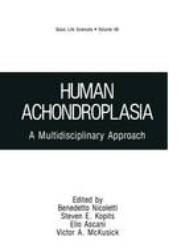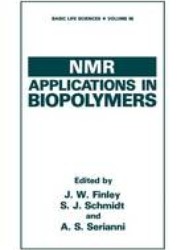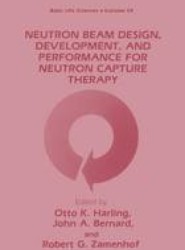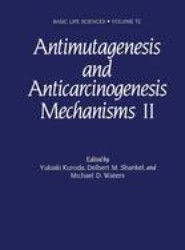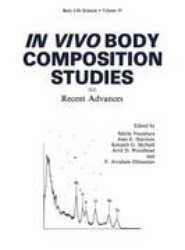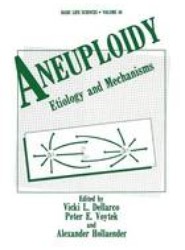(To see other currencies, click on price)
MORE ABOUT THIS BOOK
Main description:
This book is based on the papers presented at the "Fourth International Congress on Oxygen Radicals (4-ICOR)," held June 27 - July 3, 1987, at the University of California, La Jolla. The chapters deal with the phenomena associated with highly reactive oxygen species (hydroxy, peroxy, alkoxy, aroxy, and superoxide radicals, as well as singlet oxygen) and their peroxidation products (hydrogen peroxide, hydroperoxides, peroxides, and epoxides) as they relate to the fields of chemistry, food technology, nutrition, biology, pharmacology, and medicine. The kinetics, energetics, and mechanistic aspects of the reactions of these species and the interrelationship of oxygen radicals (or any other free radicals) and peroxidized products have been emphasized. Special attention is focused on the mechanisms of the generation of free radicals and peroxy products in biosystems and on the adverse effects of these radicals and products in humans. The topics span the continuum from the simple chemistry of model systems to the complex considerations of clinical medicine. The book also explores the mechanisms of agents that protect against free radicals and peroxy products in vitro and in vivo. These agents include antioxidants used in materials, food antioxidants, physiological antioxidants, and antioxienzymes (SOD, glutathione peroxidase, and catalases). The use of these inhibitors to prevent damage to organs being prepared for transplantation, thereby maintaining the quality of transplanted organs and/or extending their "shelf-life," also is examined.
Contents:
to Peroxidation and Antioxidation Mechanisms.- Kinetics and Mechanisms.- The Redox Thermodynamics for Dioxygen Species (O2, O2-*, HOO*, HOOH, and HOO-) and Monooxygen Species (O, O-*, *OH, and -OH) in Water and Aprotic Solvents.- Electron Spin Resonance Investigations of Oxygen-Centered Free Radicals in Biological Systems.- Superoxide Chemistry in Non-Aqueous Media.- Peroxy Radicals and Singlet Oxygen (1O2) from the Addition of Superoxide Ion (O2-) to CCl4, CF3CCl3, PhCCl3, N-BuBr and N-BuCl in Acetonitrile.- The Uniqueness Both of Superoxide Toxicity and of the Protective Role of Superoxide Dismutase.- Peroxyl Radicals in Aqueous Media.- Aspects of the HO2* Elimination Reaction from Organic Peroxyl Radicals: Some Recent Examples.- Kinetic Studies of Alkoxyl Radicals.- Radical-Induced Degradation of Organic Halogen and Sulfur Compounds in Oxygenated Aqueous Solutions.- Thiyl Free Radical Metabolites of Thiol Drugs and Glutathione.- Oxidation of Quinones by H2O2: Formation of Epoxy- and Hydroxyquinone Adducts and Electronically Excited States.- From Nitric Oxide to Desferal: Nitrogen Free Radicals and Iron in Oxidative Injury.- Singlet Oxygen: Current Mechanistic Aspects of Photo-Oxidation.- Homolysis of Substituted Anisoles: Substituent Effects on Phenoxyl Radical Stabilities.- Redox Properties of Oxy and Antioxidant Radicals.- Generation of Oxy Radicals.- The Role of Metals in Aqueous Superoxide Chemistry.- Fenton Chemistry Revisited: Amino Acid Oxidation.- Iron Redox Reactions and Lipid Peroxidation.- The Generation of Ferryl or Hydroxyl Radicals during Interaction of Hemeproteins with Hydrogen Peroxide.- The Production of Hydroxyl and Semiquinone Free Radicals during the Autoxidation of Redox Active Flavonoids.- Fenton Reactions in Lipid Phases: Iron Solubility, *OH Production, and Initiation of Lipid Oxidation.- The Role of Hemoglobin in Generating Oxyradicals.- Detection and Measurements.- Specific Detection of Lipid Hydroperoxides Using HPLC-EC Method.- Quantitative Determination of Fatty Acid Hydroperoxides in vivo.- Detection of Lipid Peroxidation Products in Lipids and Tissues by Gas Chromatography-Mass Spectrometry.- Direct Chemical Ionization Mass Spectrometry of Underivatized Arachidonic Acid Metabolites: Application to Leukotriene Biosynthesis.- Chemiluminescence - High Performance Liquid Chromatography of Phosphatidylcholine Hydroperoxide in Human Blood Plasma.- Method for Tracing Oxygen-18 in vivo: Application to Ozone Dosimetry in Animals.- Malondialdehyde Derivatives in Urine.- Electron Spin Resonance of the Semiquinone of the Antitumor Antibiotic Streptonigrin and Its Metal Complexes.- Chemiluminescence.- The Detection of Singlet Oxygen in Biochemical Systems Using 1268 nm Chemiluminescence.- Phagocyte Dioxygenation Reactions Yielding Chemiluminescence: The Maximum Multiplicity and Spin Conservation Rules Relative to Oxygen Reactivity.- Bryostatin Stimulation of Human Neutrophil Luminol and DBA (Lucigenin) Chemiluminescence.- Luciferase Reverse Micellar Bioluminescence: Kinetics and Emission Spectra.- Platelet Chemiluminiscence Induced by Linoleic and Arachidonic Acids.- Low Level Chemiluminescence from Isolated Rat Hepatocytes, Intact Lung and Intestine in situ.- Prevention by Propionylcarnitine of NADPH and tert-Butyl Hydroperoxide-Dependent Chemiluminescence in Heart Microsomes.- Chemiluminescence from Vitamin E-Deficient Erythrocyte Membranes Induced by Xanthine Oxidase Reaction.- Monitoring the Interactions of Environmental Agents by Cell-Dependent Chemiluminescence: Studies with Polycyclic Aromatic Hydrocarbons.- Gel State Chemiluminescence: An Artificial Electron Transport System.- Free Radicals and Oxygen Species in Lipids.- Hydroperoxidation of Unsaturated Fatty Esters.- Lipid Peroxidation and Retinal Phototoxic Degeneration.- Production and Metabolism of Cytotoxic Phospholipids Generated during Incubation of Liposomes with Oxyhemoglobin.- Lipid Peroxidation Dependent on Oxygen and Catalytic Free Iron Ions in situ Storage Muscle Foods.- A Unique Role of Histidine in Fe-Catalyzed Lipid Oxidation by Fish Sarcoplasmic Reticulum.- Cholesterol Epoxidations by Defined Oxygen Species.- Thermal Decomposition of Methyl Linoleate and Methyl Linolenate Hydroperoxides Analyzed by Capillary Gas Chromatography.- Effect of Dietary Lipid Peroxides on Lymphoid Tissues.- Free Radicals and Oxygen Species in Proteins.- Implication of Protein Oxidation in Protein Turnover, Aging, and Oxygen Toxicity.- Role of Oxidative Modification in the Lability of Ceruloplasmin.- The Oxidative Modification of Lens Proteins.- Degradation of the Proteoglycans of Human Articular Cartilage by Reactive Oxygen Metabolites.- Free Radical Denaturation of Immunoglobulin G Is due to Amino Acid Oxidation: Implications for Rheumatoid Arthritis.- A Study of ROS Induced Denaturation of IgG3 Using Monoclonal Antibodies; Implications for Inflammatory Joint Disease.- Oxy Radical-Initiated Protein S-Thiolation and Enzymic Dethiolation.- Free Radicals and Oxygen Species in Lipoproteins.- Modification of Human Low Density Lipoprotein by Lipid Peroxidation.- Is Oxidized Low Density Lipoprotein Involved in the Recruitment and Retention of Monocyte/Macrophages in the Artery Wall during the Initiation of Atherosclerosis?.- Copper and Copper-Nicotinic Acid Complexes Mediated Oxidation of High Density Lipoprotein.- Oxidation of Human Low Density Lipoprotein Initiated by Copper(II)Chloride.- Isolation and Partial Characterization of an Oxidized LDL in Humans.- Coronary Disease: Spectroscopic Correlation of Structure and Size of Plasma Lipoproteins with Patient Clinical History.- Free Radicals and Oxygen Species in DNA.- The Effect of Oxygen on the OH Radical-Induced Strand Break Formation of DNA in vitro and in vitro.- Double Strand Breakage in DNA and Cellular Radiation Sensitivity: Linear Energy Transfer and the Oxygen Effect.- Effect of *OH Scavenging on the Yield of Radiation-Induced DNA Double-Strand Breaks in Isolated Nuclei.- Sonochemistry of Nucleic Acid Constituents in Aqueous Solution. A Spin-Trapping Study.- Gamma Radiolysis of RNA. An ESR and Spin-Trapping Study.- Interactions of Oxygen and Sulfhydryls with Free Radicals in Irradiated Mammalian Cells.- Oxygen Radicals, Lipid Peroxidation and DNA Damage in Mitochondria.- Involvement of Reactive Oxygen Intermediates in the Mutagenicity of Tumor Promoters.- Oxidative Damage to DNA in Adrenocortical Cells during Senescence in Culture.- Substituted Phthalocyanines as Photodynamic Sensitizers.- Effects of Singlet Oxygen on the Biological Activity of DNA and Its Involvement in Single Strand-Break Formation.- Determination of 8-Hydroxydeoxyguanosine in Human Urine: A Possible Assay for in vivo Oxidative DNA Damage.- Urine Biomarkers for Oxidative DNA Damage.- The Generation of Radicals during the Normal and Abnormal Functioning of Cytochromes P-450.- Radical Intermediates in the Catalytic Cycles of Cytochrome P-450.- Cytochrome P-450 Model Systems: Alkene Oxidation.- Cytochrome P-448 Induction Restores the Propagation of *O2--Induced Lipid Peroxidation in Hepatoma Microsomes.- Generation of Superoxide by the Microsomal Mixed-Function Oxidase System.- Oxidative Stress.- Membrane Permeability and Oxidant Induced Injury.- The Measurement of Protein Degradation in Response to Oxidative Stress.- Oxidative Modification of Enzymes during Aging and Acute Oxidative Stress.- Oxidative Modification of Glutamine Synthetase: Covalent and Conformational Changes which Control Susceptibility to Proteolysis.- Role of Hemin in Oxidative Stress Induced by Divicine in Vitamin E-Deficient Rats.- The Isolation and Partial Characterization of Stable H2O2-Resistant Variants of Chinese Hamster Fibroblasts.- Reactive Oxygen Metabolites and Hyperoxic Toxicity.- Antioxidant Defense.- Inhibition of Peroxidation of Membranes.- Cellular Protection Against Damage by Hydroperoxides: Role of Glutathione.- A Secondary Antioxidant Defense Role for Proteolytic Systems.- Radioprotection of Mice with Ascorbic Acid, Desferal and Mercaptoethylamine.- Antiinflammatory, Analgesic, and Antiulcer Activities of Copper Complexes Suggest Their Use in a Physiologic Approach to Treatment of Arthritic Diseases.- Tocopherol Behavior and Membrane Constituents in Erythrocytes with Oxidant Stress.- Porcine Stress Syndrome, Free Radicals and Vitamin E.- Increased Oxidation of Tocopherols in Chickens with Inherited Muscular Dystrophy.- Vitamin E and Immune Functions.- Beneficial Effect of Dietary Antioxidants on the Aging Immune System.- Inclusion of Antioxidants in Resuscitation Fluids.- Serum Antioxidant Activity as a Determinant of Pulmonary Dysfunction in Cigarette Smokers.- Enzymatic Defense.- Probing Enzyme-Substrate Recognition and Catalytic Mechanism in Cu,Zn Superoxide Dismutase.- Bacterial Superoxide Dismutases.- Extracellular-Superoxide Dismutase Association with Cell Surface-Bound Sulfated Glueosaminoglycans.- Catalases-With and Without Heme.- Glutathione Peroxidase.- The Role of Glutathione Transferase in the Detoxication and Repair of Lipid and DNA Hydroperoxides.- n-3 Fatty Acids and Hydroperoxide Activation of Fatty Acid Oxygenases.- Sequence of Complementary DNA Encoding Human Extracellular-Superoxide Dismutase and Production of Recombinant Enzyme.- A cSOD-Null Mutant of Drosophila Confers Sensitivity to Paraquat and Reduced Longevity.- Induction of Superoxide Dismutase Activity by Paraquat or EDU in Human Gingival Fibroblasts.- Superoxide Dismutase in Cultured Benign and Malignant Tumors of the Colon.- Microinjection of Antioxidant Enzymes to Protect Cells from Oxygen Derived Free Radicals.- Human Fibroblast Antioxidant Defense Response to Alteration in Oxygen Tension.- Relationship between the Antioxidant Enzyme DT-Diaphorase and Tumor Response to Mitomycin C Treatment.- Microsomal Fatty Acid Composition and Ca2+ Uptake Modifications Induced by SOD Depletion in Rat Liver.- The Use of Oxygen Free Radical Scavengers in the Rat Peritonitis Model.- Adaptations to Plant Pro-Oxidants in a Phytophagous Insect Model: Enzymatic Protection from Oxidative Stress.- Pharmacology and Toxicology.- Mechanisms for the Generation of Oxygen Radicals by Drugs.- Enhancement of Chemical Activation via Radical-Dependent Mechanisms: An Emerging Concept in Chemical-Chemical Interactions.- Roles of Oxygen and Oxygen Substitutes in DNA Sugar Damage by Antitumor Antibiotics.- Reduction of 5-Nitroimidazoles, Nitrofurazone, and 2,4-Dinitrophenol to Their Free Radical Metabolites by Tritrichomonas foetus Hydrogenosomes.- Role of Free Radicals in Etoposide (VP-16,213) Action.- The Mechanism of Quinone Formation from Carcinogenic Benzo[a]Pyrene Mediated by Lipid Peroxidation in Liposomal Suspension.- Lipid Peroxidation, Protein Thiols and Calcium Homeostasis in Bromobenzene-Induced Liver Damage.- Vanadate Stimulation of Pyridine Nucleotide Oxidation in Mammalian Liver Microsomal Membranes.- Mechanism of Oxidation of 1-Methyl-4-Phenyl-3,3-Dihydropyridinium (MPDP+).- Reduction of Nitroheterocyclic Drugs by Ascorbate and Catecholamines: A Possible Mechanism for the Neurotoxicity of Nitroheterocyclic Drugs.- Role of Active Oxygen in Paraquat and 1-Methyl-4-Phenyl-1,2,3,6-Tetrahydropyridine (MPTP) Cytotoxicity.- Free Radical Formation by Cytotoxic Alkylaminoanthraquinones in Liver Microsomes.- Lipid Peroxidation and Haloalkylation in CCl4-Induced Liver Fatty Degeneration and Necrosis.- Paraquat-Resistant HeLa Cells.- Neutrophils and Phagocytosis.- The Respiratory Burst Oxidase.- Reactions of Myeloperoxidase with Superoxide and Hydrogen Peroxide: Significance for Its Function in the Neutrophil.- Bacterial Killing by Phagocytes: Potential Role(s) of Hypochlorous Acid and Hydrogen Peroxide in Protein Turnover, DNA Synthesis, and RNA Synthesis.- Cellular Targets of H2O2 and HOCl Induced Injury.- Oxidative Modification of Enzymes by Stimulated Neutrophils.- Oxidative Inactivation of Neutrophil Granule Proteinases: Implications for Neutrophil-Mediated Proteolysis.- Effects of Alpha, Beta-Unsaturated Aldehydes on Macrophage and Neutrophil Membrane Function, Fluidity and Sulfhydryl Status.- Latex Beads as Vehicles for the Study of Free Radical Processes in Phagocytic Cells.- Superoxide Generation of Phagocytizing Polymorphonuclear Leukocytes from Patients with Chronic Renal Failure.- Ischemia - Reperfusion.- Clastogenic Factor in Ischemia-Reperfusion Injury. Protective Effect of Allopurinol.- Inactivation of Creatine Phosphokinase by Superoxide during Reperfusion Injury.- The Post-Treatment Experiment: An Operational Definition of Reperfusion Injury.- Mechanisms of Oxidant-Mediated Microvascular Injury Following Reperfusion of the Ischemic Intestine.- The Amplificative Role of PAF-Acether in the Oxidative Stress Following Reperfusion of Ischemic Stomach.- Equieffective Protection by Human and Bovine SOD Against Renal Reperfusion Damage in Rats.- Potential of Methylene Blue to Block Oxygen Radical Generation in Reperfusion Injury.- Cardiovascular System.- Superoxide Radical Release into the Cytoplasm of Heart Cells by an NADH-Driven Oxygen Activator.- Detection and Measurement of Free Radical Generation during Cardiovascular Injury.- Evidence That Free Radicals Result in Reperfusion Injury in Heart Muscle.- Identification of Free Radical Species in the Myocardium.- Abnormal Electrical Activity Induced by H2O2 in Isolated Canine Myocytes.- Role of Oxygen Radicals in Endotoxin Shock and Disseminated Intravascular Coagulation.- Plasma Lipid Peroxidation and Atherosclerosis in Restricted Ovulator Chickens.- Enzymatic Lipid Peroxidation: A Step in the Breakdown of Mitochondria during the Maturation of Red Blood Cells.- Myocardial Salvage by the Free Radical Scavenging Actions of Xanthine Oxidase Inhibitors.- Oxygen Radical Scavengers and Myocardial Preservation during Transplantation: Role of Xanthine Oxidase.- General Medicine.- Endothelial Cells: A Source and Target of Oxidant Damage.- The Role of Iron in Injury of Endothelial Cells in vitro and in vivo.- Alterations in Cultured Rat Pulmonary Artery Endothelial Cells with Hyperoxia; Effect of Age.- Lung Energy Metabolism Following Twenty-Four Hours Exposure to One Hundred Percent Oxygen.- Prostaglandins and Leukotrienes in Pulmonary O2 Toxicity.- Lipid Peroxidation, Free Radicals and Experimental Inflammation.- Inhibition by Prostacyclin Analogs of *O2- Production in Human Polymorphonuclear Leukocytes.- Kawasaki Disease, Oxygen Radicals and High Dose Gammaglobulin Therapy.- An Endogenous Source of the Superoxide Anion in the Central Nervous System.- Hydrogen Peroxide Production in Dopamine Neurons.- Oxygen Radical-Mediated Damage to Brain Tissue.- Oxygen-Induced Retinopathy in the Rat.- Selective Inhibition of Membrane ATPases by Hydrogen Peroxide in the Lens of the Eye.- Anterior Chamber Hydrogen Peroxide: Effects of 3-Aminotriazole on Peroxide Kinetics and on the Status of Glutathione.- Morphological Sequelae of Anterior Segment Hydrogen Peroxide in Young and Adult abbits with or without 3-Aminotriazole Treatment.- Corneal Oxygen Scavenging Systems: Lysis of Corneal Epithelial Cells by Superoxide Anions.- The Role of Allopurinol and Oxygen Free Radical Scavengers in Liver Preservation.- Prevention of Acute Renal Failure by SOD and Sucrose.- The Aging Process.- Influence of Life-Prolonging Food Restriction on Membrane Lipoperoxidation and Antioxidant Status.- Author Index.
PRODUCT DETAILS
Publisher: Springer (Springer-Verlag New York Inc.)
Publication date: December, 2012
Pages: None
Weight: 1889g
Availability: Available
Subcategories: Biochemistry
From the same series


